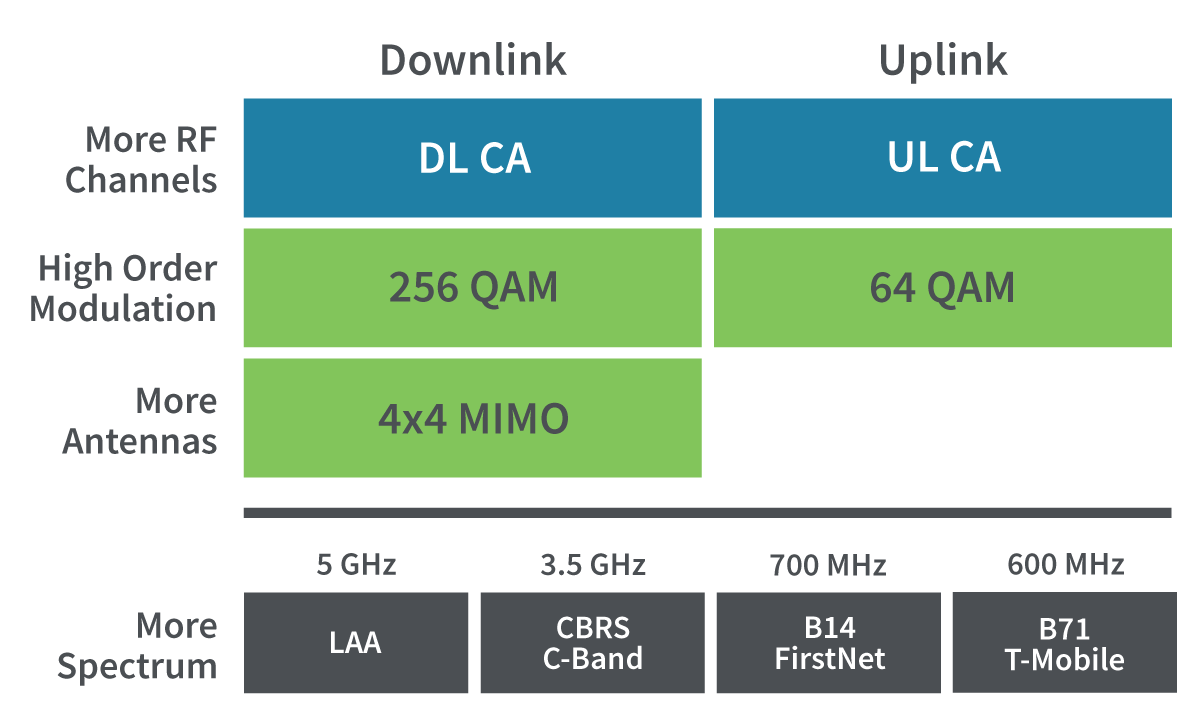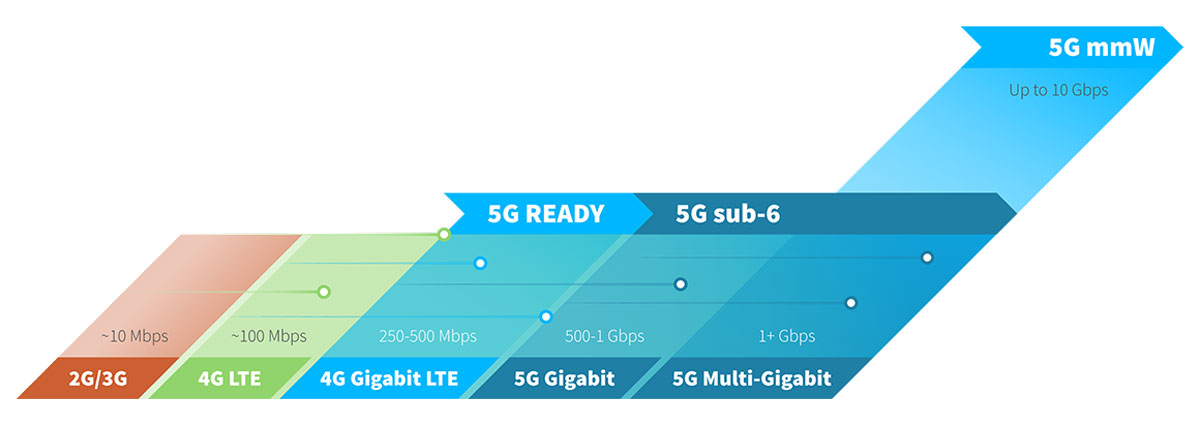
Gigabit-class LTE is one of the most significant steps in the long-term evolution of the world’s mobile communication networks as they begin their gradual shift to 5G – the next generation of wireless technology. Gigabit-class LTE, as the name implies, is theoretically capable of delivering data download speeds of 1 Gigabit per second (1 Gbps) or greater. In actual practice, users will typically see speeds that are quite a bit lower, usually in the 100s of Mbps range.
Nevertheless, Gigabit-class LTE offers significantly faster speeds than conventional 4G LTE, and is more than sufficient for most high-speed applications in retail, transportation or other industries that need to connect sites or people with high-bandwidth solutions. And just as you don’t have to drive a high-end sports car at top speed to enjoy its superior performance, Gigabit-class LTE can deliver benefits in a data network without pushing the outer limits of the underlying hardware or software.
Recipe for Gigabit LTE

LTE Advanced Pro — Where Gigabit-Class LTE Got Its Start
The third Generation Partnership Project (3GPP), the international organization that develops standards and protocols for mobile telecommunications, issued the specifications that made Gigabit-class LTE possible. Those specifications came out in 3GPP Releases 13 and 14 under the name “LTE Advanced Pro.” They included three major areas of technical innovation:
- Carrier Aggregation (CA) increases throughput by using spectrum from different LTE carrier bands, which together provide a much higher peak data rate than is available through a single carrier band. Aggregating spectrum from multiple bands could be compared to adding more lanes on the highway. The aggregation process can also improve speeds at the edge of a network by combining multiple weaker signals to deliver higher throughput. License Assisted Access (LAA) can further boost carrier aggregation by tapping into unlicensed spectrum such as the 5 GHz Wi-Fi band or shared spectrum, such as the 3.5 GHz Citizens Broadband Radio System (CBRS) band.
- Higher-order modulation uses the available spectrum more efficiently by carrying more data bits. Specifically, 256 Quadrature Amplitude Modulation (256-QAM) provides 33% faster download speeds than 64-QAM, which is the standard modulation in existing 4G LTE. 256-QAM could be compared to putting more passengers into each vehicle.
- 4x4 MIMO (Multiple Input, Multiple Output) antennas. Many devices today have two antennas per cellular modem. 4x4 MIMO uses four antennas to transmit and receive data in parallel at higher speeds. These parallel antennas can also help in difficult signal conditions, for example in dense urban areas where a signal could be reflected from a building and received via multiple paths.
Get Ready for 5G with Digi Gigabit-Class LTE Routers
The Gigabit-class LTE technologies described above are a key milestone in the journey to the next-generation 5G New Radio (5G-NR) Access Network. When comparing apples to apples, 5G is only 25% faster than 4G LTE. But through the use of more spectrum, more carrier aggregation, even higher-order modulation and massive MIMO with beam-forming antennas, 5G will take Gigabit LTE to the next level over the next decade.

Today, Digi high-speed routers enable organizations to take advantage of Gigabit-class LTE capabilities in any high-speed, high-bandwidth network, while preparing for the 5G future. And when 5G becomes more widely available, they provide a smooth transition path.